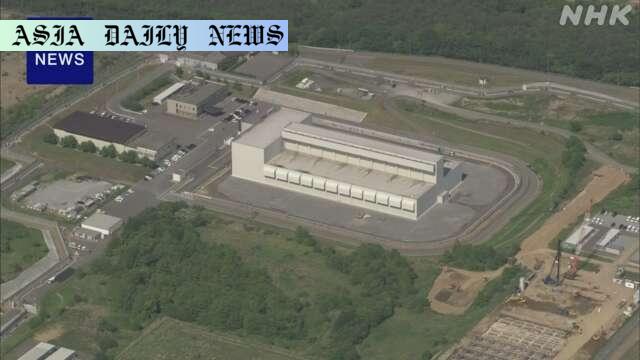Fukushima: TEPCO plans to transfer its spent nuclear fuel to an interim storage facility in northern Japan for enhanced safety.
TEPCO plans to move spent nuclear fuel to a northern Japan facility.
Fuel storage excludes damaged reactors 1-4 due to safety concerns.
Governor Miyashita emphasizes safety oversight by regulators.

Introduction to TEPCO’s Storage Plan
Tokyo Electric Power Company (TEPCO) has announced a new strategy for handling spent nuclear fuel from various facilities in Fukushima Prefecture. This plan, aimed at ensuring long-term safety and sustainability, focuses on transporting spent fuel from some Fukushima reactors to an interim storage facility located in Mutsu City, Aomori Prefecture. The facility, operational since last year, provides a secure, controlled environment designed to minimize risks associated with nuclear waste storage.
A Detailed Overview of the Plan
According to TEPCO’s president, Kobayakawa Tomoaki, the plan will prioritize spent fuel from reactors No.5 and No.6 at the Fukushima Daiichi facility, along with materials from Fukushima Daini and other TEPCO-operated nuclear plants. Notably, the No.5 and No.6 reactors avoided significant damage during the catastrophic 2011 Fukushima nuclear disaster, ensuring the spent fuel stored there has remained in good condition. Additionally, the interim facility already accommodates spent fuel from the Kashiwazaki-Kariwa plant. This strategic move aligns with pre-existing agreements between TEPCO and Aomori Prefecture made before the 2011 accident occurred.
Addressing Challenges for Damaged Reactors
However, TEPCO has acknowledged the challenges associated with reactors No.1 through No.4 at Fukushima Daiichi. These units, which suffered extensive damage during the 2011 disaster, were cooled using seawater—a method that complicates the possibility of storing or reprocessing the resulting spent fuel. As such, spent fuel from these reactors is excluded from the current storage plan. Governor Miyashita Soichiro of Aomori has reiterated that safety certification by the Secretariat of the Nuclear Regulation Authority is a strict prerequisite before any spent fuel can be transferred to the facility.
Reinforcing Safety and Building Trust
The comprehensive safety measures associated with this plan reflect TEPCO’s commitment to learning from past events and ensuring the highest levels of security in its nuclear operations. The utility company has emphasized that the spent fuel from units No.5 and No.6 is in excellent condition and comparable to that of any other operational nuclear plant. These assurances aim to build trust among local governments and residents, addressing public concerns about nuclear safety in the region following the traumatic events of 2011.
Future Outlook for Nuclear Waste Management
This initiative represents a critical step in Japan’s ongoing efforts to manage and store nuclear waste responsibly. By transferring spent fuel to a state-of-the-art facility designed for interim storage, TEPCO not only reduces risks at existing reactor sites but also sets a precedent for future actions. However, the final disposition of this spent fuel remains a challenge, with options such as reprocessing or permanent storage requiring further evaluation and significant investments in technology and infrastructure.
Overall, this development underscores the importance of collaborative efforts between utility companies, government entities, and local communities to address the complexities of nuclear waste management while maintaining a focus on long-term safety and sustainability.



Commentary
Introduction to Nuclear Challenges
The announcement of TEPCO’s plan to manage spent nuclear fuel marks a notable milestone in Japan’s approach to addressing nuclear safety and environmental responsibility. As we reflect on the events of the Fukushima Daiichi disaster in 2011, it is evident that public scrutiny and the demand for accountability have shaped policies governing the nuclear industry. This new initiative provides a glimpse into how lessons from the past can inform strategies for the future.
The Balance Between Progress and Precaution
It is encouraging to see TEPCO taking steps towards resolving one aspect of nuclear waste management by transferring spent fuel to a dedicated interim storage facility. By focusing on intact reactors such as Fukushima Daiichi’s No.5 and No.6 units, TEPCO ensures that its approach is grounded in feasibility and safety. However, the exclusion of spent fuel from damaged reactors No.1 through No.4 highlights the ongoing technical and logistical challenges that still need to be surmounted. This serves as a reminder of the complexities inherent in managing nuclear materials, especially under extraordinary circumstances.
Building Public Trust is Key
While the logistics of transportation and storage are critical, an equally important aspect of this plan is gaining public trust. The residents of Fukushima and Aomori prefectures alike have lived with the shadow of nuclear risk for over a decade. Transparent communication, stringent safety standards, and oversight by independent regulators will be crucial in reassuring them of the project’s viability. Trust is not given—it is earned through action and consistent results.
Concluding Thoughts
As the world transitions to cleaner and more sustainable energy sources, nuclear power remains a contentious but integral option in many national energy portfolios. How nations like Japan navigate the challenges of nuclear waste management will set important precedents for others to follow. TEPCO’s current plan is a step in the right direction, but it is by no means the final word on the matter. Continuous innovation, collaboration, and accountability will be needed to tackle this global issue effectively.